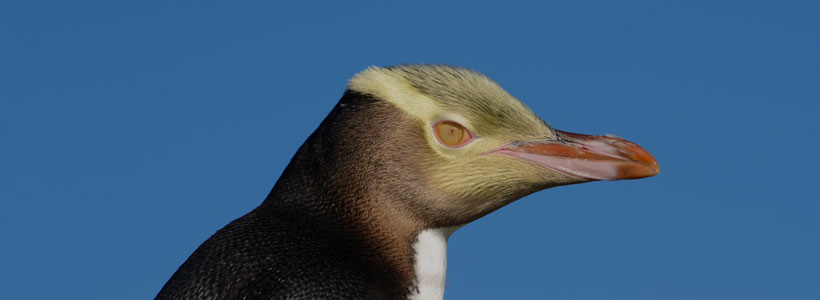Yellow-eyed penguins are one of the rarest penguins in the world and are unique to New Zealand. They were given their Māori name, hoiho (meaning noise shouter) because of their shrill call.
Yellow-eyed penguins are the least social of all penguins. Very shy, they prefer to nest well away and always out of sight of their neighbours. Nest sites are often secluded and scattered deep in the shade of southern New Zealand’s coastal forests, scrub or dense flax. Nests and roosting sites can be found up to one kilometre inland.
They feed between two to 25km off-shore and can dive up to 120 metres as many as 200 times a day. Their favourite food includes red cod, sprat, silversides, squid, āhuru, blue cod and opal fish fingerlings.
Adult penguins are slate grey-blue with a white breast and belly. They have solid yellow feathers on their head with yellow eyes and eye band. Males and females are identical in colouring.
Juvenile penguins have grey eyes and no yellow eye band. Their yellow head plumage is muted or absent until 14-16 months of age.
Chick yellow-eyed penguins are coated with thick dark brown down feathers.
The best place to watch yellow-eyed penguins is at a beach with a public viewing hide or hut. There are some on the Otago coast which you can use free-of-charge. For the best views, take binoculars.
The Bushy Beach, Kātiki Point and Nugget Point Reserve hides are each within five minutes’ walk of their car parks. Follow the paths.
The Sandfly Bay hide is a 30-minute walk from the carpark at the end of Sealpoint Road. Walk north along the beach and follow the sign-posted track up the sandhill.
There are commercial operations which take visitors to view yellow-eyed penguins. Find out where yellow-eyed penguins live in New Zealand and where you can see them


